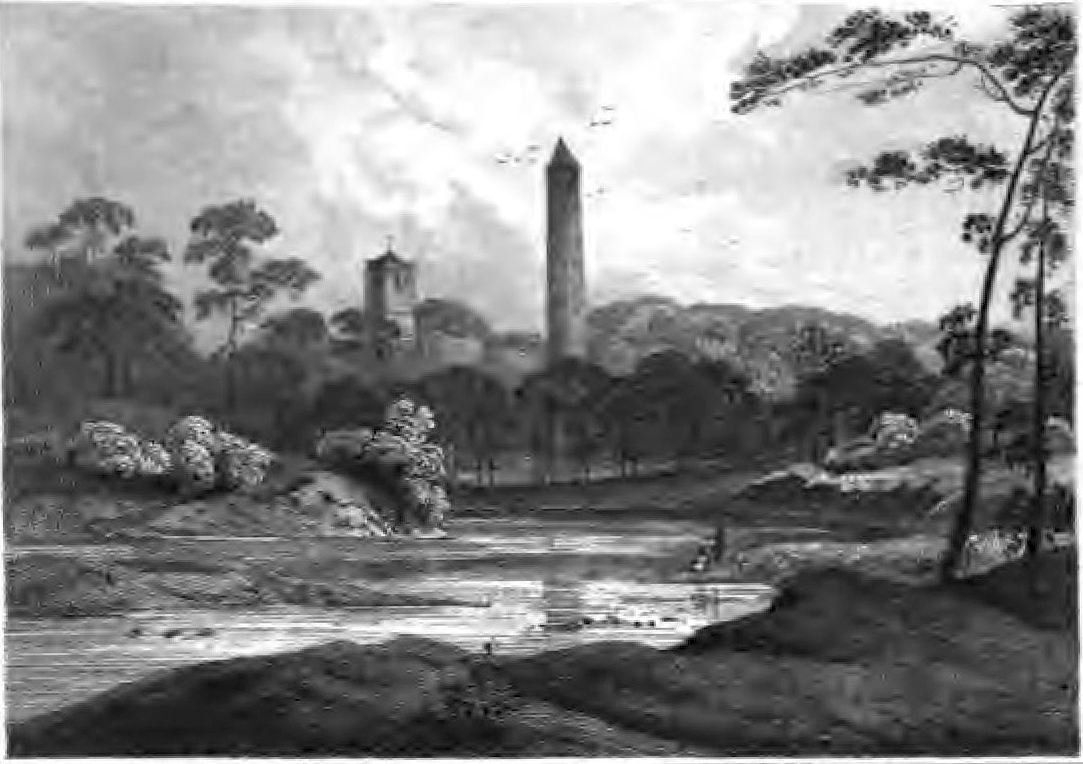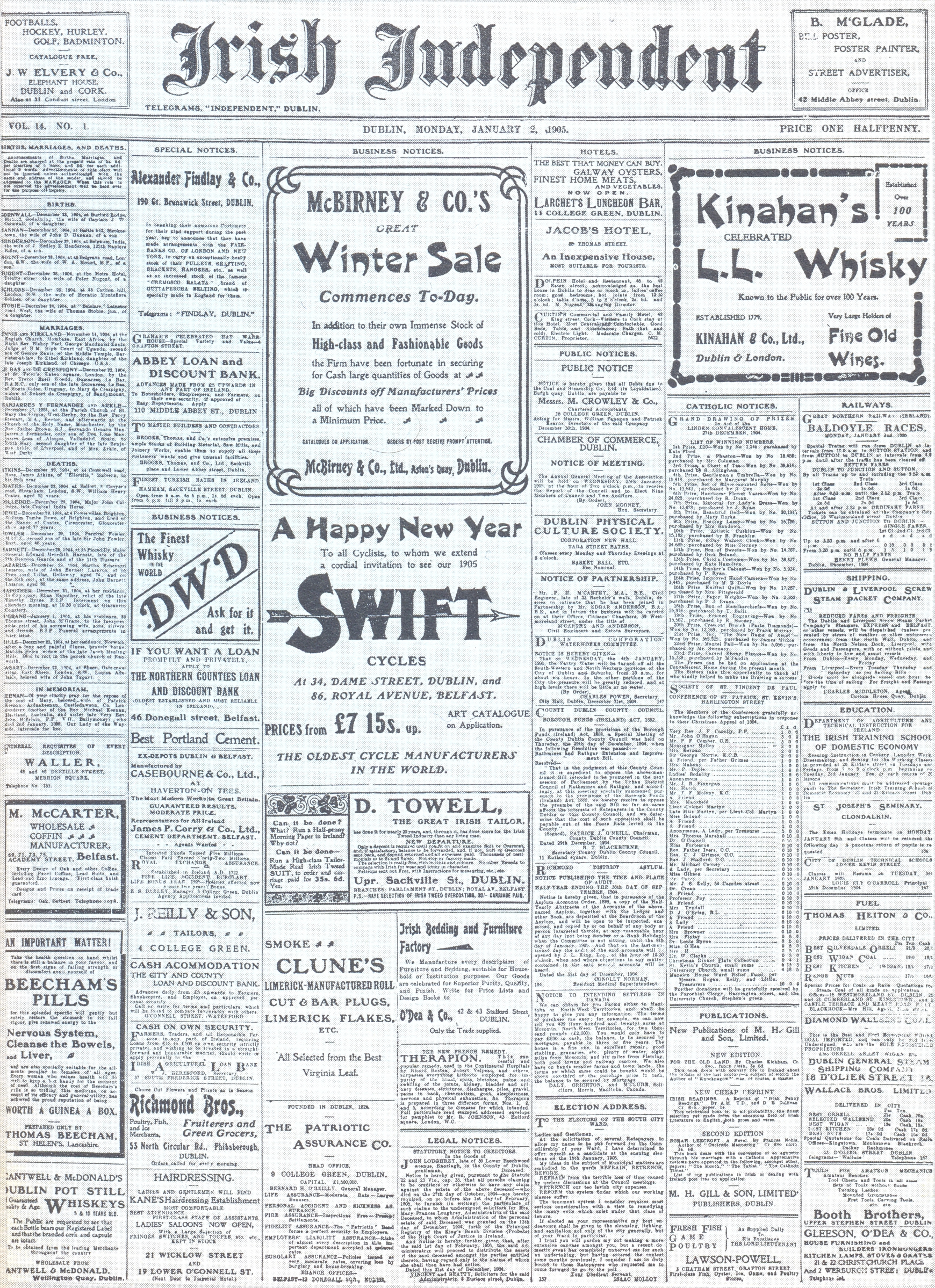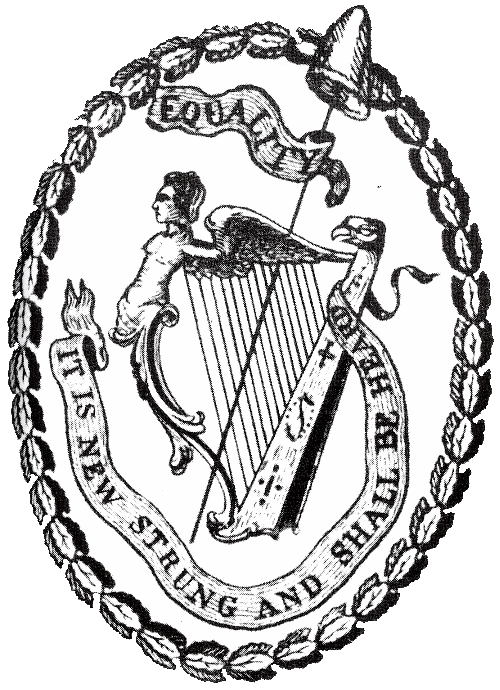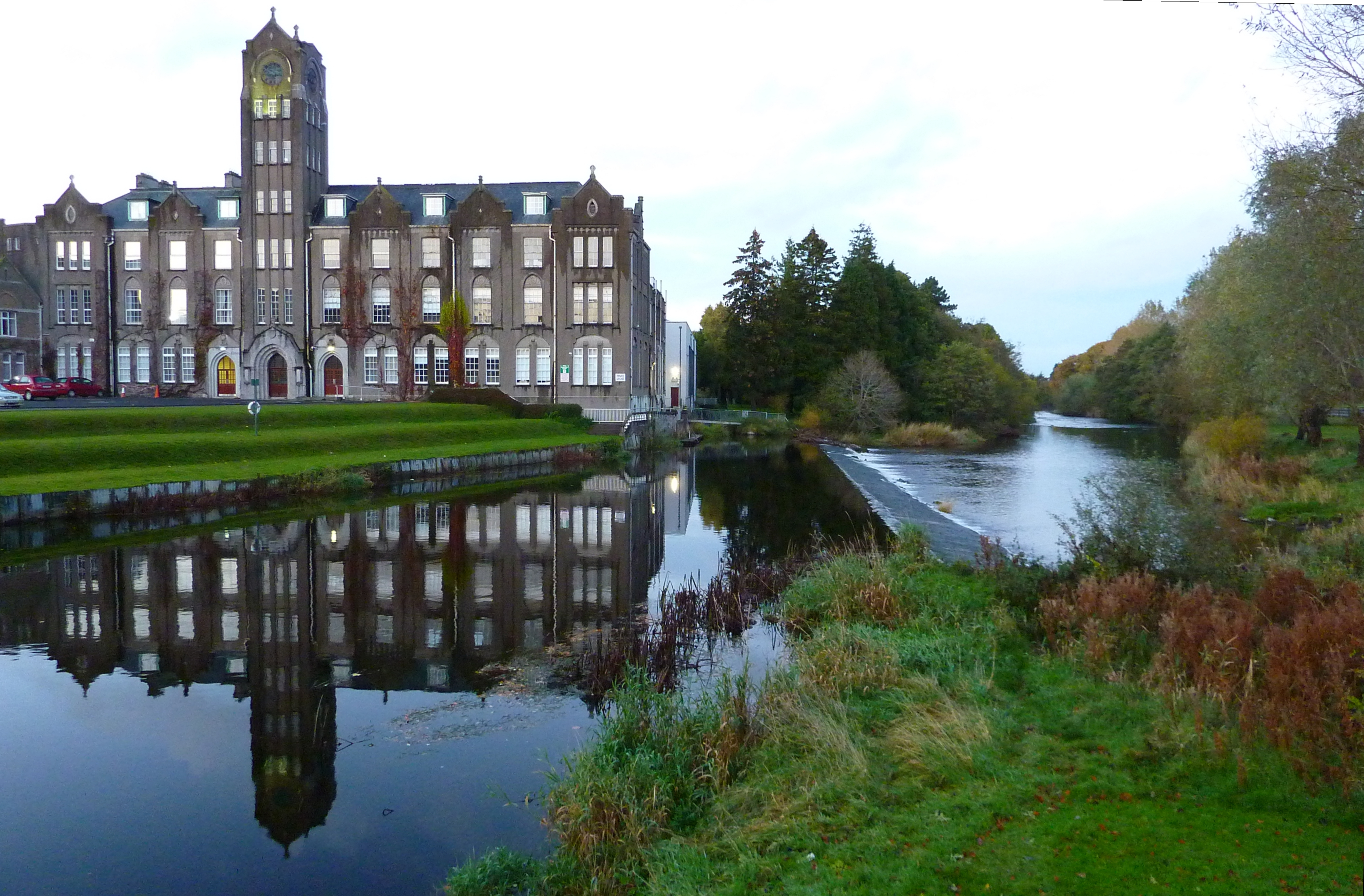|
Rathcoole, Dublin
Rathcoole () is an outer suburban village, south-west of the city of Dublin, in the jurisdiction of South Dublin, Ireland. Rathcoole is also a civil parish in the Barony of Newcastle. Etymology Ráth is the Irish word for a ringfort, a circular embankment often erected by wealthy farmers or local chiefs. There are several forts in the civil parish of Rathcoole, one in a field between the village and Saggart village. There is no definite explanation for the name 'Rathcoole,' but it could well be ''Ráth Cumhaill meaning 'the ringfort of Cumhaill'', the father of Fionn mac Cumhaill. Coole may also come from the Irish word for forest, "coill." Location Rathcoole lies in the southwest "corner" of the traditional County Dublin, just off the N7 national primary road, southwest of Citywest and west of Saggart village. Close by to the north are Baldonnel and Casement Aerodrome, home of the Irish Air Corps. Also in this part of the county are Newcastle and, further away, Britta ... [...More Info...] [...Related Items...] OR: [Wikipedia] [Google] [Baidu] |
Republic Of Ireland
Ireland ( ga, Éire ), also known as the Republic of Ireland (), is a country in north-western Europe consisting of 26 of the 32 counties of the island of Ireland. The capital and largest city is Dublin, on the eastern side of the island. Around 2.1 million of the country's population of 5.13 million people resides in the Greater Dublin Area. The sovereign state shares its only land border with Northern Ireland, which is part of the United Kingdom. It is otherwise surrounded by the Atlantic Ocean, with the Celtic Sea to the south, St George's Channel to the south-east, and the Irish Sea to the east. It is a unitary, parliamentary republic. The legislature, the , consists of a lower house, ; an upper house, ; and an elected President () who serves as the largely ceremonial head of state, but with some important powers and duties. The head of government is the (Prime Minister, literally 'Chief', a title not used in English), who is elected by the Dáil and appointed by ... [...More Info...] [...Related Items...] OR: [Wikipedia] [Google] [Baidu] |
Saggart
Saggart ( ga, Teach Sagard) is a village in South Dublin, Ireland, south west of Dublin city. It lies between the N7 (Naas Road), Rathcoole, Citywest and Tallaght. It is one of the fastest-growing settlements in Ireland, showing a population increase of 46.1% between 2011 and 2016. Name A monk called Mosacra founded a settlement on the site of the village in the 7th century. The name Saggart derives from ''Teach Sacra'' which means 'house of Sacra' in Irish. History A monastery existed just outside the village in the 7th century. The remains of this monastery are found on the grounds of an equestrian centre approximately 1.5 km from today's Saggart Village. After St Mosacra died, it became a nunnery with over 80 nuns living there until the Viking attacks of the 9th century. By 1207, Saggart, or Tasagart, as it was then called by the Normans, had been made a prebend of the Cathedral of St. Patrick. In 1615, the church was reported as being in good repair but fifteen ... [...More Info...] [...Related Items...] OR: [Wikipedia] [Google] [Baidu] |
Clondalkin
Clondalkin ( ; ) is a suburban town situated 10 km south-west of Dublin city centre, Ireland, under the administrative jurisdiction of South Dublin. It features an 8th-century round tower that acts as a focal point for the area. Clondalkin forms part of the Dublin Mid-West Dáil constituency. Clondalkin is also the name of a civil parish in the ancient barony of Uppercross, and is also used in relation to some local religious parishes. History Prehistory Neolithic tribes first settled in the area around 7,600 years ago, taking advantage of the site's favourable location on the River Camac, overlooking the River Liffey and the inland pass between the mountains and the river. Evidence of the presence of the Cualann Celtic people (an early tribe possibly noted on as the Cauci on Ptolemy's world map) can be found in various mounds and raths. Christian era Clondalkin is believed to have been founded by Saint Cronan Mochua as a monastic settlement on the River Camac over 1 ... [...More Info...] [...Related Items...] OR: [Wikipedia] [Google] [Baidu] |
The Irish Times
''The Irish Times'' is an Irish daily broadsheet newspaper and online digital publication. It launched on 29 March 1859. The editor is Ruadhán Mac Cormaic. It is published every day except Sundays. ''The Irish Times'' is considered a newspaper of record for Ireland. Though formed as a Protestant nationalist paper, within two decades and under new owners it had become the voice of British unionism in Ireland. It is no longer a pro unionist paper; it presents itself politically as "liberal and progressive", as well as being centre-right on economic issues. The editorship of the newspaper from 1859 until 1986 was controlled by the Anglo-Irish Protestant minority, only gaining its first nominal Irish Catholic editor 127 years into its existence. The paper's most prominent columnists include writer and arts commentator Fintan O'Toole and satirist Miriam Lord. The late Taoiseach Garret FitzGerald was once a columnist. Senior international figures, including Tony Blair and Bill Cl ... [...More Info...] [...Related Items...] OR: [Wikipedia] [Google] [Baidu] |
Coliforms
Coliform bacteria are defined as either motile or non-motile Gram-negative non-Endospore, spore forming Bacillus (shape), Bacilli that possess Beta-galactosidase, β-galactosidase to produce acids and gases under their optimal growth temperature of 35-37°C. They can be aerobes or facultative aerobes, and are a commonly used Indicator bacteria, indicator of low sanitary quality of foods, milk, and water. Coliforms can be found in the aquatic environment, in soil and on vegetation; they are universally present in large numbers in the feces of warm-blooded animals as they are known to inhabit the gastrointestinal system. While coliform bacteria are not normally causes of serious illness, they are easy to Microbiological culture, culture, and their presence is used to infer that other pathogenic organisms of fecal origin may be present in a sample, or that said sample is not safe to consume. Such pathogens include disease-causing bacteria, viruses, or protozoa and many multicellular p ... [...More Info...] [...Related Items...] OR: [Wikipedia] [Google] [Baidu] |
Food Safety Authority Of Ireland
__NOTOC__ The Food Safety Authority of Ireland (FSAI) ( ga, Údarás Sábháilteachta Bia na hÉireann – USBE) is the statutory body responsible for ensuring food produced, distributed or marketed in Ireland complies with food safety and hygiene standards, best practice codes and legal requirements. The FSAI was established on 1 January 1999, with the enactment of the Food Safety Authority of Ireland Act, 1998. The chief executive of the FSAI is Dr. Pamela Byrne. The FSAI Act empowers the Authority to issue closure orders and prohibition orders on food businesses which do not comply with food safety and hygiene requirements. 2013 horse meat scandal The FSAI conducted tests on a sample of frozen beefburgers sold in Irish and British supermarkets in early 2013, and announced on 15 January that the test results had revealed significant quantities of horse meat in several of the products tested. The findings triggered the 2013 meat adulteration scandal The 2013 horse meat scan ... [...More Info...] [...Related Items...] OR: [Wikipedia] [Google] [Baidu] |
Irish Independent
The ''Irish Independent'' is an Irish daily newspaper and online publication which is owned by Independent News & Media (INM), a subsidiary of Mediahuis. The newspaper version often includes glossy magazines. Traditionally a broadsheet newspaper, it introduced an additional compact size in 2004. Further, in December 2012 (following billionaire Denis O'Brien's takeover) it was announced that the newspaper would become compact only. History Murphy and family (1905–1973) The ''Irish Independent'' was formed in 1905 as the direct successor to ''The Irish Daily Independent and Daily Nation'', an 1890s' pro-Parnellite newspaper. It was launched by William Martin Murphy, a controversial Irish nationalist businessman, staunch anti-Parnellite and fellow townsman of Parnell's most venomous opponent, Timothy Michael Healy from Bantry. The first issue of the ''Irish Independent'', published 2 January 1905, was marked as "Vol. 14. No. 1". During the 1913 Lockout of workers, in ... [...More Info...] [...Related Items...] OR: [Wikipedia] [Google] [Baidu] |
United Irishmen
The Society of United Irishmen was a sworn association in the Kingdom of Ireland formed in the wake of the French Revolution to secure "an equal representation of all the people" in a national government. Despairing of constitutional reform, in 1798 the United Irishmen instigated Irish Rebellion of 1798, a republican insurrection in defiance of British Crown forces and of Irish sectarianism, sectarian division. Their suppression was a prelude to the abolition of the Protestant Ascendancy Parliament of Ireland, Parliament in Dublin and to Ireland's incorporation in a United Kingdom of Great Britain and Ireland, United Kingdom with Kingdom of Great Britain, Great Britain. An attempt to revive the movement and renew the insurrection following the Acts of Union 1800, Acts of Union was Irish rebellion of 1803, defeated in 1803. Espousing principles they believed had been vindicated by American Revolutionary War, American independence and by the Declaration of the Rights of Man and ... [...More Info...] [...Related Items...] OR: [Wikipedia] [Google] [Baidu] |
River Liffey
The River Liffey (Irish: ''An Life'', historically ''An Ruirthe(a)ch'') is a river in eastern Ireland that ultimately flows through the centre of Dublin to its mouth within Dublin Bay. Its major tributaries include the River Dodder, the River Poddle and the River Camac. The river supplies much of Dublin's water and supports a range of recreational activities. Name Ptolemy's ''Geography'' (2nd century AD) described a river, perhaps the Liffey, which he labelled Οβοκα (''Oboka''). Ultimately this led to the name of the River Avoca in County Wicklow. The Liffey was previously named ''An Ruirthech'', meaning "fast (or strong) runner". The word ''Liphe'' (or ''Life'') referred originally to the name of the plain through which the river ran, but eventually came to refer to the river itself. The word may derive from the same root as Welsh ''llif'' (flow, stream), namely Proto-Indo-European ''lē̆i-4'', but Gearóid Mac Eoin has more recently proposed that it may derive from a n ... [...More Info...] [...Related Items...] OR: [Wikipedia] [Google] [Baidu] |
River Camac
The River Camac (sometimes spelled ''Cammock'', or, historically, ''Cammoge'' or ''Cammoke''; Irish: or ) is one of the larger rivers in Dublin and was one of four tributaries of the Liffey critical to the early development of the city. Course The Camac flows from a source on Mount Seskin/Knockannavea mountain north-east of the village of Brittas (southwest of Dublin city), joining other mountain streams, before being diverted by an 18th-century diversion from the Brittas River tributary of the River Liffey. It flows through a mountain valley named the Slade of Saggart which lies just west of the N81 road (and below the site of the Crooksling tuberculosis sanatorium) southwest of the broad Tallaght plain and east of Newcastle. The river then flows past Saggart, through Kingswood and under the N7. The Camac proceeds through Kilmatead, where there is a small lake with islands, and from there flows into Corkagh Park (formerly Corkagh demesne) where the river was diverted into ... [...More Info...] [...Related Items...] OR: [Wikipedia] [Google] [Baidu] |
Brittas, County Dublin
Brittas (, meaning "wooden parapet") is a rural village in the jurisdiction of South Dublin, just north of the border with County Wicklow on the N81 road. The village is notable for five sycamore tree-stump carvings by the side of the road depicting Irish mythological figures carved in 2018. The River Camac originates close to Brittas before descending through the Slade of Saggart to Saggart and beyond. Location Brittas is in the foothills of the Dublin Mountains, and about a 30-minute drive from Dublin city centre. Representation Brittas is within the Dublin Mid-West electoral constituency, and the 'Clondalkin Local Electoral Area' for County Council elections. Amenities In the summer of 1876, with almost 30 families facing the future without a local education programme, Fr Michael Barry from Saggart was approached about the possibility of establishing a school in Brittas. In 1881, the house beside the old post office was rented from one Mrs Dowling of ''The Brittas Inn' ... [...More Info...] [...Related Items...] OR: [Wikipedia] [Google] [Baidu] |
Newcastle, South Dublin
Newcastle () is a village in the south-western part of South Dublin county, Ireland. It is also a civil parish in the barony of the same name. It was the location of the castle of the barony, which in historical and official documents is described as Newcastle-Lyons. The area is still primarily rural in nature. Newcastle village is within the administrative area of South Dublin County Council. History Evidence of ancient settlement in the Newcastle area include a number of ringfort, fulacht fiadh and tower house sites in the townlands of Newcastle Farm, Newcastle North, Newcastle South and Ballynakelly. A raised motte, dated to the 12th century Norman invasion of Ireland, is located close to the medieval church in Newcastle, St Finian's church. The parliamentary borough of Newcastle elected two MPs to the Irish House of Commons from 1613 to 1801. It was disenfranchised by the Acts of Union 1800. The gradual relaxation of the Penal Laws throughout Ireland and Great Brita ... [...More Info...] [...Related Items...] OR: [Wikipedia] [Google] [Baidu] |






